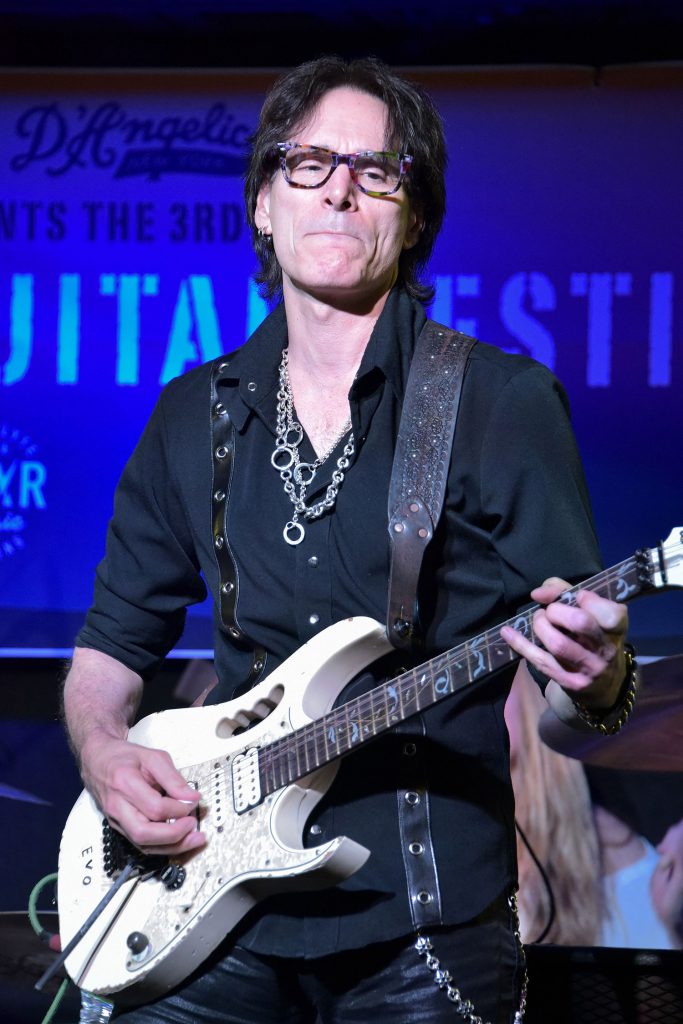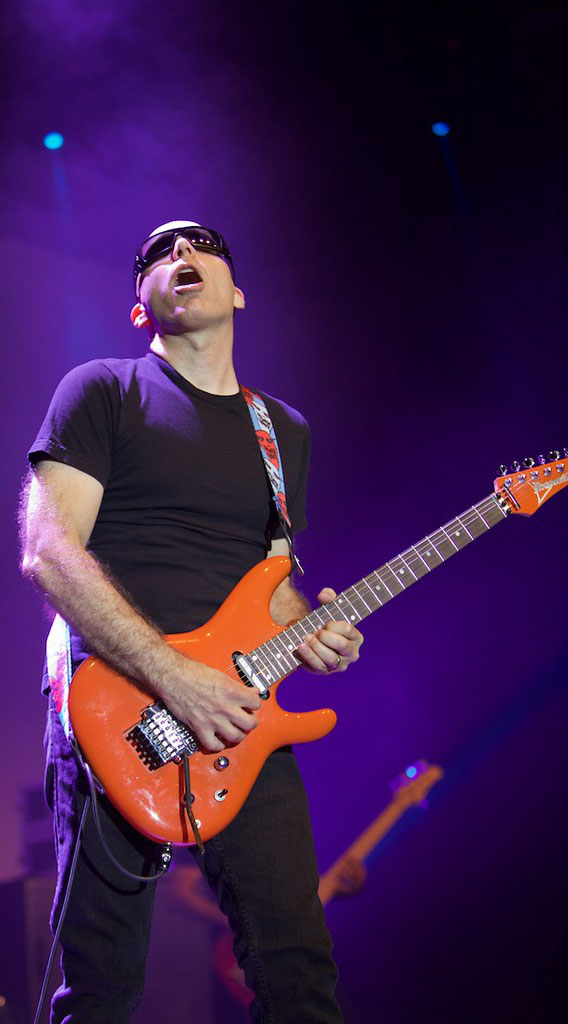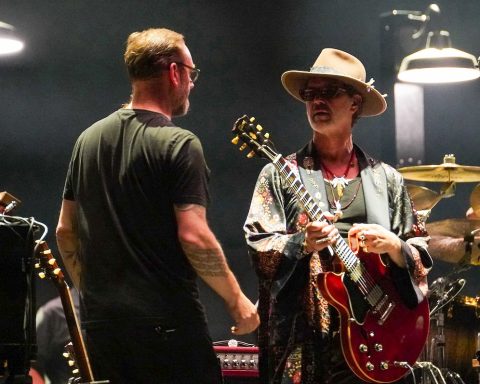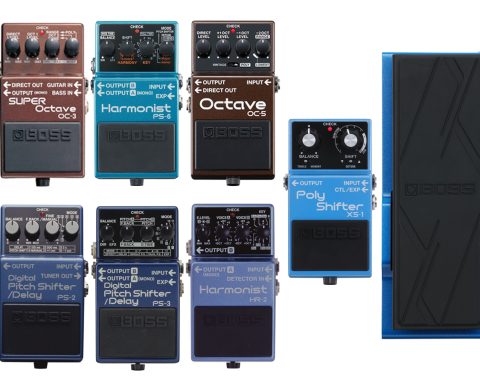Want to start a dustup? Ask another guitarist about the perfect signal chain for stompboxes. Opinions about the best pedal order vary. Indeed, emotions can run high amongst zealots when they detail their own “impeccable” pedalboards. Every buckeroo who loves dancing on those alluring little boxes of tone thinks they have the right answer. As a result, getting counsel works for you can be like looking for a contact lens in a mosh pit.
A Logical Path
Someone who might provide close to a “right” answer is guitar maestro Steve Vai. In a 2018 BOSS/Musician’s Friend webinar, “Perfect Pedal Order,” Vai stated he wasn’t comfortable recommending a best or cleanest order. Instead, he preferred to discuss a logical signal path. Vai also said, “Don’t be afraid. There are no mistakes you can make. Put them in any order and see how your ears respond.”
Confused yet?
Perhaps it’s more productive to focus not so much on the concept of an absolute pedal order. Instead, let’s spotlight signal chains that could benefit specific types of players. That is unless you enjoy the verbal combat of precise truths. In which case, have a t-shirt made bearing an image of your preferred pedal order and jump into the melee. Otherwise, here are some temperament-oriented signal paths to explore.
Embrace Common Wisdom
If you’re uncomfortable rocking the boat, you’ll be happy to find signal-path conventions are far from an exercise in conformity. Decades of study by audio pros, bona fide guitar heroes, and tone geeks have produced optimal signal paths. These players have constructed beautiful, vibey, and raging guitar sounds. You can’t go too wrong championing proven groupthink, so give the following recipes a try.

"Some of the most glorious sounds of the '60s were mistakes, surprises, or experiments."

The Steve Vai Method
In his Perfect Pedal Order webinar, Vai advocated the following signal path. Guitar to tuner (BOSS TU-3), to overdrive (BOSS OD-1X), distortion (BOSS DS-1), modulation 1 (BOSS BF-3), modulation 2 (BOSS PH-3), and delay (BOSS DD-7). This arrangement allows you to step rather ergonomically through clean sounds to crunch or distortion. Then you have the shimmery effects at the end of the line to process either your clean or dirty tones. Simple and elegant.
Five Families Grouping
1: Pedals that Affect Dynamics/Pitch
Roland Australia Product Team Leader Ed Lim offers a “family style” approach to pedal order. Like Vai, Lim puts a tuner first to ensure a clean, robust signal down the line. Family group one is “Pedals that Affect Dynamics/Pitch.” Examples include the BOSS PS-6 Harmonic or CP-1X Compressor, as these processors track better when fed clean signals.
2: Pedals that Produce Tone
Think of the BOSS MT-2W Metal Zone, or BD-2W Blues Driver. The thinking here is to place the roar early in the signal chain as these pedals tend to crank up the noise floor of your fundamental guitar tone. (You don’t want tons of audible hiss and other gremlins compromising your sound down the line).
"A compressor's job is to raise low-level signals. This can increase noise along with the source sound, so early in the chain is a good thing."
3: Pedals that Modify Tone
Group three examples include the BOSS DC-2W Dimension C, CE-2W Chorus, etc.). Place them after the distortion and overdrive effects to punch up the shimmery, cinematic goodness.
4: Pedals that Repeat/Replicate Sound
This group includes pedals like the BOSS DD-8 Digital Delay, RC-5 Loop Station, etc.). These family members are near the end of the chain to ensure they enhance the processing before them.
5: Pedals that Create Ambience
Here, we include units like the BOSS RV-6 Reverb and TE-2 Tera Echo. Unless your home is an anechoic chamber, reverb will animate and add dimension to your sounds. This means everything that comes before should benefit from the beatific wash.

By the Numbers
Guitar Player writer and founder of Guitar Moderne, Michael Ross, devised a simple numerical map for pedal order. Position One is filters like BOSS PW-3 Wah and AW-3 Dynamic Wah. Because they respond to attack, you don’t want anything that mutes attack—like compressors or distortions—to interfere. Position two is compressors. Their job is to raise low-level signals. This can increase noise along with the source sound, so early in the chain is a good thing.
Distortions and overdrives assume Position Three because they operate better with unmodulated signals. On the other hand, having modulation effects after crunch, fuzz, or saturation creates some stunning textures. Spoiler alert—we’ve already given it away that Position Four is modulation. Position Five is a volume pedal like the BOSS FV-500, FV-30, etcetera. In this position, you can control the level of aggressive tones, as distortion and overdrive pedals come before. As with the Five Families, reverb and delay are in Position Six to add ambience to sounds crafted earlier.
"Reverb will animate and add dimension to your sounds. This means everything that comes before should benefit from the wash."
Follow the Leaders
If you’re Google every sliver of data before buying a toaster, you may feel more comfortable working from a pre-determined template. This is a nice alternative to setting up a conventional signal path and charting your course. An excellent starting point is to emulate—or steal—the path of a renowned professional. Chances are high you can find photos of your favorite player’s pedalboard and copy their order. How easy is that?
Satriani Style
For example, if you love Joe Satriani, cop the basic arrangement of one of his pedalboards. [1] wah, [2] fuzz/octave, [3] modulation (including a BOSS CH-1 Super Chorus), [4] distortion, [5] overdrive, [6] pitch-shifter, [6] delay.
Experimental Dagger
Perhaps you’re into more experimental music. Italian guitarist Sara Ardizzoni of Dagger Moth performs loop-based music with a BOSS RC50 at the end of her signal chain. From her guitar, Ardizzoni plugs into [1] BOSS Tuner, [2] BOSS Tremolo, [3] delay, [4] BOSS MO2 Multi Overtone, [5] distortion, [6] fuzz.
Whether you’re into blues, jazz, industrial, ambient, reggae, acoustic music, or any other style, do a little homework. It will reveal everything about your favorites player’s gear. Soon, you’ll have a basic road map to a guitar tone you know very well. Then, you can wade into emulation. Finally, when you’re more confident, blast off into sonic experimentation.

'This is music you are creating,
so emotion, inspiration, and uniqueness are paramount.'

Go Your Own Way
There’s always the option to punk rock the operation. This means place your pedals in any order you want, as long as the resulting sound is what you are looking for. Maybe you like to follow your gut—or dig arranging pedals by their color schemes. Call it the “Andy Warhol Method.”
You could get an earful from more conventional stompbox aficionados. But, hey, if the tone you produce is your bliss, then there’s not much anyone can say to bum you out. Don’t put down this approach as an operation of ignorance, either. Some of the most glorious sounds of the ’60s were mistakes, surprises, or experiments. Toss the rules into a dumpster, and devise something astounding.
What Is Perfection?
This is music you are creating, so emotion, inspiration, and uniqueness are paramount. Achieving that has nothing to do with tutorials, guidebooks, manuals, or the coaching of friends or bandmates. In fact, how you get there is how you get there. So, the “perfect” pedal order is the sequence that’s perfect for you.







